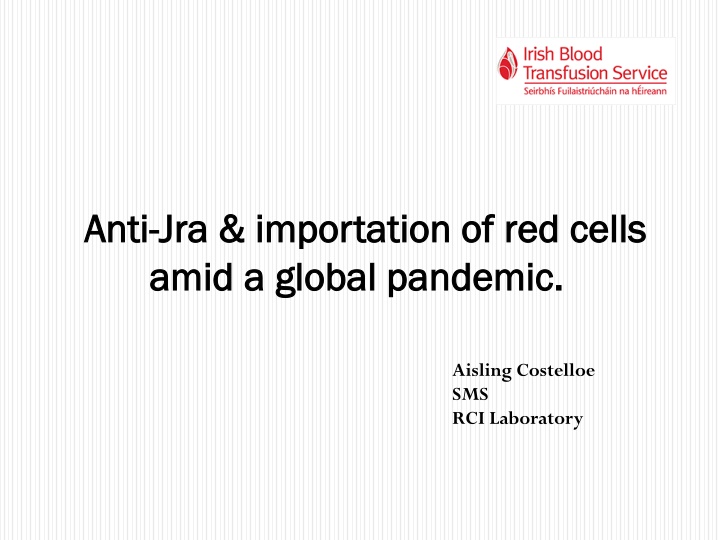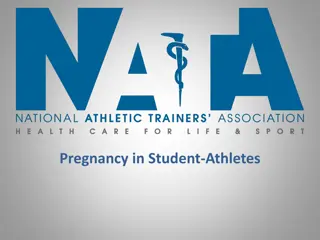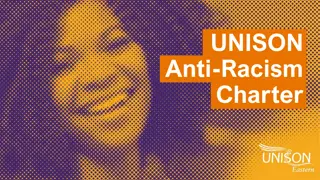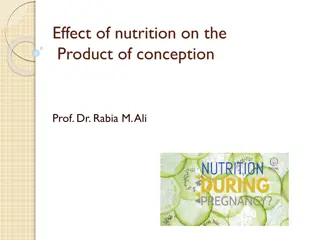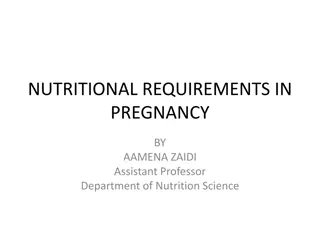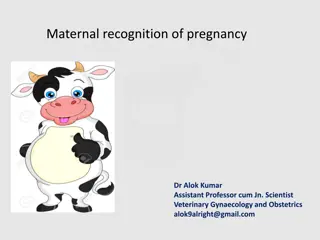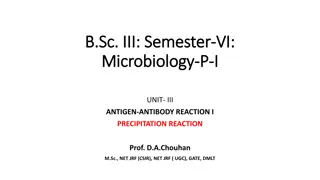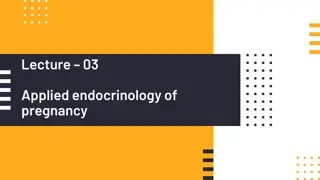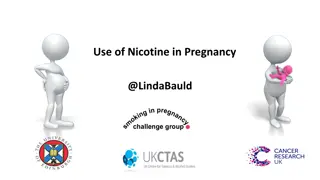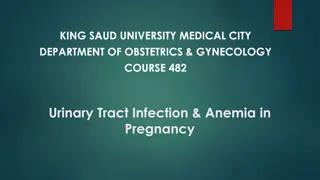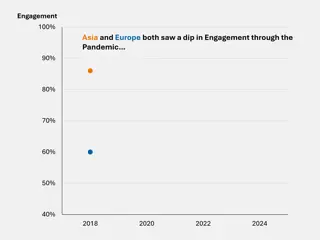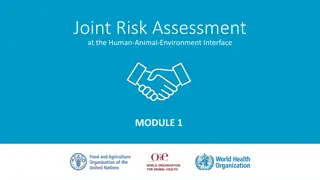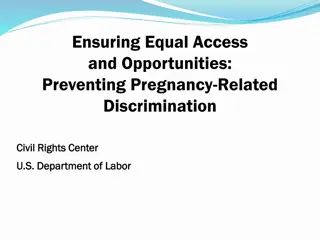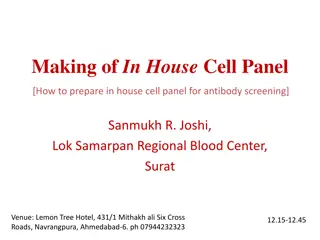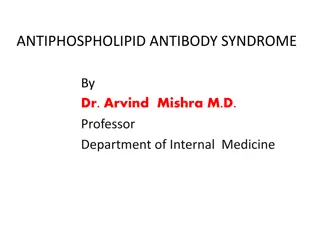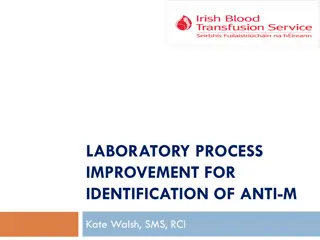Serological Work Up: Anti-Jra Antibody in Pregnancy Amid Global Pandemic
Serological work up in an antenatal patient with the identification of a rare anti-Jra antibody, management challenges, and referral for Jra phenotyping. The presence of other significant antibodies excluded, highlighting the importance of accurate blood group testing and potential risks in red cell importation during a global pandemic.
Download Presentation

Please find below an Image/Link to download the presentation.
The content on the website is provided AS IS for your information and personal use only. It may not be sold, licensed, or shared on other websites without obtaining consent from the author.If you encounter any issues during the download, it is possible that the publisher has removed the file from their server.
You are allowed to download the files provided on this website for personal or commercial use, subject to the condition that they are used lawfully. All files are the property of their respective owners.
The content on the website is provided AS IS for your information and personal use only. It may not be sold, licensed, or shared on other websites without obtaining consent from the author.
E N D
Presentation Transcript
Anti Anti- -Jra Jra & importation of red cells & importation of red cells amid a global pandemic. amid a global pandemic. Aisling Costelloe SMS RCI Laboratory
Overview Background RCI Serological Work Up RCI Laboratory Test Results JR blood group system Anti-Jra Clinical Management Red Cell Importation during a global pandemic Patient and Infant Outcome
Background Antenatal patient, second pregnancy Routine booking sample received at RCI Laboratory Pan-reactive IAT and ENZ panels Auto: Neg DAT: Neg Sent for antibody investigation and antenatal workup
RCI Serological Work Up Blood Group: B RhD positive Rh/K Phenotype: C+ E- c- e+ K- (R1R1) Extended Phenotype: Fy(a+b-) Jk(a+b+) M+ S- s+ k+ Antibody Panel Results: Auto Cell 1 2 3 4 5 6 7 8 9 10 11 IAT 2+ 2+ 2+ 2+ 2+ 2+ 2+ 2+ 2+ 2+ 2+ 0 ENZ -IAT 3+ 3+ 3+ 3+ 3+ 3+ 3+ 3+ 3+ 3+ 3+ NT DAT: Negative
RCI Serological Work Up Patient s ethnicity = Chinese SCARF programme Access to rare cells and antisera internationally Rare reference cell and antisera database at RCI High incidence antibodies suspected: Jk3, Ge3, PP1Pk, Oka, Jra [Vel, Coa, Dib, Lua-b-, Sda, Lan]
RCI Serological Work Up High frequency antibody was identified as Anti-Jra The presence of other clinically significant antibodies were excluded following allo-adsorption. 3 x rare anti-Jra antisera available however none suitable for Group B Sample was referred to IBGRL for Jra phenotyping
RCI Laboratory test results RCI Gestation Result Comment 12 B D(+) anti-Jra Titre (1) 16 B D(+) anti-Jra Titre (4) 20 B D (+) anti-Jra Titre (8) 24 B D (+) anti-Jra Titre (2) 28 B D(+) anti-Jra Titre (1)
JR Blood Group System Stroup & Macllroy described antibody observed in 5 Caucasian antenatal patients 1970 Called Jra after patient Rose Jacobs ISBT Working party assigned JR blood group to the 901 series of high incidence antigens. The associated gene for the antigen was unknown at that time 1990 Genetic basis of Jra antigen described by two independent groups(Zdinski et al, 2012 and Saison et al,2012) 2012 Became JR Blood Group System [ISBT Number 052]
Jra Antigen The Jra antigen is located on ABCG2 transporter, a multipass membrane glycoprotein Encoded by the ABCG2 gene- Located on long arm of chromosome 4
ABCG2 Transporter ATP-binding cassette (ABC) transporter situated on cell membrane It functions in transporting a broad spectrum of substrates out of the cell (detoxifying role) A.k.a breast cancer resistance protein due to its ability to confer mulitidrug resistance during chemotherapy
ABCG2 Transporter It is widely expressed in normal cells and tissues e.g. Capillary endothelial cells, GI cells Hematopoietic stem cells Tissue of the liver, kidney and testes Maternal glands The maternal fetal barrier of the placenta ABCG2 expression levels in cord RBCs are higher than those of adults ABCG2 is overexpressed on the surface of the placental villi therefore if the fetal blood group is Jr(a+), anti-Jra can be readily stimulated in maternal serum during pregnancy.
Jr Inheritance Jr(a ) blood type have inherited two null alleles of ABCG2 gene. Null alleles are as a result of frameshift and nonsense mutations No antithetical antigen has been described thus far
Anti-Jra IgG Subclass Anti- Jra targets the 5D3 region of the ABCG2 transporter Majority of examples of anti-Jra have been documented in antenatal setting
Clinical Implications of Anti-Jra Transfusion reactions Mild to moderate DHTRs One report of acute haemolytic transfusion reaction HDFN Cause of fetal anaemia ranging from mild to severe Also reports of: Fetal Hydrops Mirror Syndrome Transfusion requirements: It is permitted in a clinical emergency situation or if antigen negative rbc unit(s) not available to transfuse serologically compatible or least incompatible red cells by IAT
Clinical management considerations Consideration Comment Avoid transfusion Iron supplementation, optimum nutrition Foetal monitoring MCA Doppler early warning incipient foetal anaemia Availability of local blood donor Screen ethnic minority donors Chinese Korean and Japanese (n=84) International rare donor file Identify liquid Jra(-) donors and schedule collection International frozen red cell banks More difficult logistically, reduced recovery, not all donations qualified (HEV) and reduced shelf life
Clinical management considerations ADG laboratory screen local donors for Jra(-) RCI laboratory determine compatibility using patient plasma sample Refer for biological assay (ADCC) to estimate haemolytic potential of antibody Regulatory compliance of imported units as IBTS has a high compliance regime
Biological assay - ADCC ADCC test result of 30% is used to timely select pregnancies at risk for fetal hemolysis Gestation (weeks) Result (haemolysis %) 16 <10 28 <10 37 <10
Screen for local donors Ethnic minority n = 84 Result One B (D+) Japanese donor (IAT compatible) Confirmed IBGRL weak Jra(+) Comment Reserved as potential donor (IAT compatible)to cover preterm delivery (returned to Japan because of Covid19)
Importation of red cell components Challenge Solution Identify group O Jra (-) donors Access Serum Cells and Rare Fluids panel 2 x group O K(-) Jra(-) donors identified in Valencia, Spain Schedule collection Scheduled for 36 weeks gestation Arrange transport (Covid19) Military aviation explored but civil aviation flights resumed just in time Temperature controlled shipment and storage Continuous temperature monitor log and validated storage container 24 hours ( 22 hours shipment time)
Importation of red cell components Challenge Solution Qualification ID HEV RNA and anti-hepatitis core antibody testing completed in IBTS on additional donor samples Labelling 42 day time expiry applied in Spain required IT work around and quality and compliance approval for release
Patient and Neonate Outcome Emergency delivery by Caesarean section for foetal bradycardia 250 ml blood loss and no transfusion outcome Neonatal haemoglobin 19g/dl and bilirubin = 19 mmol/l DAT positive (2+) and anti-Jra eluted Red cell components recovered into SCARF Thank you to colleagues in Spain and to donors Patient has volunteered as a blood donor!!
References Tanaka K, Hosoi K, Yoshiike S, Nagahama K, Tanigaki S, Shibahara J, Ohnishi H, Kobayashi Y. Mirror syndrome due to anti-Jra alloimmunization. Taiwan J Obstet Gynecol. 2020 May;59(3):456-459. Saison C, Helias V, Ballif BA, Peyrard T, Puy H, Miyazaki T, Perrot S, Vayssier- Taussat M, Waldner M, Le Pennec PY, Cartron JP, Arnaud L. Null alleles of ABCG2 encoding the breast cancer resistance protein define the new blood group system Junior. Nat Genet. 2012 Jan 15;44(2):174-7. Endo Y, Ito S, Ogiyama Y. Suspected anemia caused by maternal anti-Jra antibodies: a case report. Biomark Res. 2015 Aug 21;3:23. S omka M, Sobalska-Kwapis M, Korycka-Macha a M, Dziadek J, Bartosz G, Strapagiel D. Comprehensive Analysis of ABCG2 Genetic Variation in the Polish Population and Its Inter-Population Comparison. Genes (Basel). 2020 Sep 29;11(10)
References Ogasawara K, Mazuda T. Characterization of Jra antibodies by monocyte phagocytosis assays and flow cytometry analysis. Acta Haematol Jpn (in Jap) 1990;53:1131-7. Fujita S et al. Expression levels of ABCG2 on cord red blood cells and study of fetal anemia associated with anti-Jra. Immunohaematology 56 (5): 1171-1181 [https://doi.org/10.1111/trf.13515] Castilho L, Reid ME. A review of the JR blood group system. Immunohematology. 2013;29(2):63-8. PMID: 24094238. Koelewijn JM and Slootveg YM et al. Diagnostic value of laboratory monitoring to predict severe hemolytic disease of the fetus and newborn in non D and non K alloimmunized pregnancies. Transfusion. 2019;60(2):391-399
